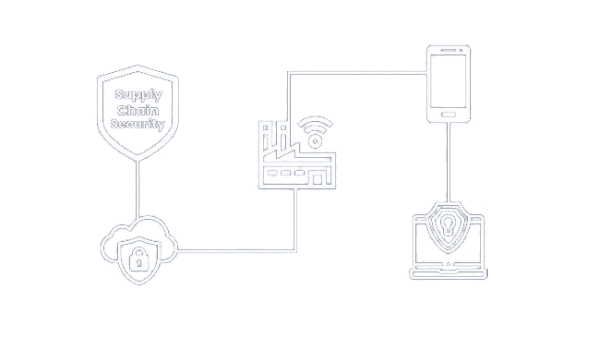
Supply Chain Security
Most organisations rely upon an extended sometimes complicated network of suppliers to deliver products, systems, and services. You probably have a number of suppliers yourself, it’s how we do business.
The guidance will provide organisations with an improved awareness of supply chain security, as well as helping to raise the baseline level of competence in this regard, through the continued adoption of good practice. Whilst beneficial, this guidance has not been written for organisations with national security (high assurance), requirements.
What is the cyber threat to Supply Chains?
Due to the size and complexity of supply chains, securing supply chains effectively can be hard because vulnerabilities can be inherent, or introduced and exploited at any point in the supply chain. Due to these issues, many businesses struggle to set minimum security standards for their suppliers, according to the 2016 Security Breaches Survey. Organisations need to take an active approach to identifying, risk assessing and managing security threats in their own supply chains, as criminals can and will exploit or introduce vulnerabilities into equipment, hardware, software, or
services that link to their networks and systems. Supply chain attacks can be used for a number of purposes, including breaching confidential data, delivering ransomware, stealing login credentials for further attacks, or even supplying defective equipment to prevent a service from being usable.
Compromising the supply chain has become a favoured approach by cyber criminals, as it allows them to not only bypass strong security measures, but potentially target higher volumes of victims.
Understand the risks involved with your supply chain
It is no longer enough that your own security practices are kept to high standards, you have to be confident that any third-party businesses who you deal with also incorporate good security standards.
Try to build an idea of who your suppliers are and what their security looks like. Do you know what needs to be protected and why?
Guidance on this can be found on the NCSC site at
https://www.ncsc.gov.uk/collection/supply-chain-security
CE is a simple but effective, Government backed scheme that helps to protect your organisation, whatever its size, against a whole range of common cyber attacks.
There are many benefits to becoming accredited, and some Government contracts actually require CE certification.
Try to conduct due diligence when researching suppliers and ask if they are CE certified.
Find out more about the recently updated scheme at: https://www.ncsc.gov.uk/cyberessentials/overview
Raise awareness of security within your supply chain. Communicate your needs to your suppliers, build it into your contracting processes, and meet your own security responsibilities both as a consumer and supplier.
Don’t be afraid to contact your suppliers about suspicious activity.
Seeking continuous improvement of security within your supply chain is advantageous in many ways, and it also builds trust with your customers.
As with all cyber threats, it’s important that you prepare your response, and plan your recovery from potential incidents. Make sure you include your third party suppliers in your incident response planning.
A useful resource is the NCSC’s guide at:
https://www.ncsc.gov.uk/collection/small-business-guidance–response-and-recover
